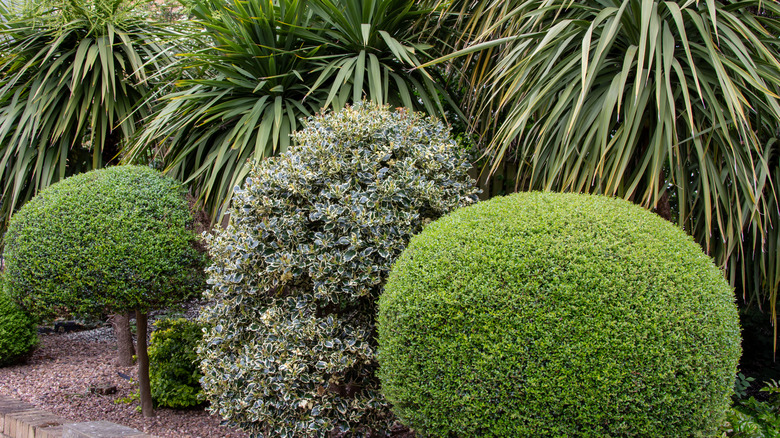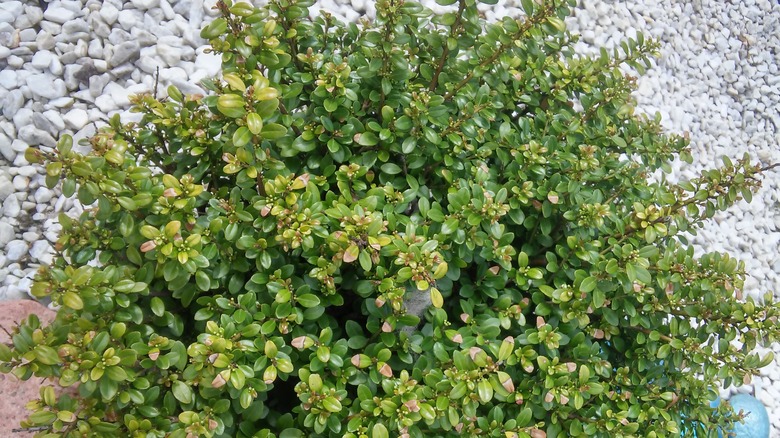If you’re thinking of adding a bush to your garden or yard, you might be weighing the options between holly and boxwood. These two plant types are popular choices for gardeners, but it’s quite easy to mix them up if you’re not familiar with their distinct characteristics. To make an informed decision, a deeper understanding of each plant is crucial.
Beginning with boxwood – scientifically known as Buxus – this genus encompasses around 70 species of evergreen shrubs, each boasting dense, small leaves. They form thick, compact bushes, making them a favorite for creating structured, manicured landscapes. Originating from regions as diverse as Europe, Asia, Africa, and the Caribbean, boxwoods have a global pedigree. Their ability to withstand heavy pruning and shaping makes them a go-to for gardeners who fancy topiaries or neat hedges.
Then there’s holly, with its botanical classification under the genus Ilex aquifolium. This group is significantly larger, encompassing over 480 species. Holly is instantly recognizable — think glossy, spiky leaves and those iconic bright red berries that have become synonymous with festive decorations. Holly plants are versatile in terms of their native climates, thriving in both tropical and temperate regions. Keep in mind that each plant has its own personality and growth habits. So, when selecting between these two, it helps to understand their growth characteristics and ideal conditions to ensure that your garden flourishes with the right kind of greenery.
Understanding the differences: boxwood vs. holly

Diving into the differences between boxwood and holly can feel a bit like comparing two classic gardening styles. As mentioned, each has its own unique set of characteristics that set it apart, making the choice between them more than just a matter of personal preference. Let’s start with boxwood. Picture a plant that grows at a leisurely pace, about 20 centimeters (8 inches) per year under ideal conditions. This slow growth rate is one of the reasons gardeners favor boxwoods, especially those who enjoy the art of topiary or desire a formal, well-manicured garden. They offer a sense of control and predictability, making them ideal for gardeners who take pleasure in regular pruning and shaping. If left to their own devices, boxwoods can grow quite tall — up to 30 centimeters. However, they are most commonly seen as shorter hedges or intricately shaped figures in garden landscapes.
In contrast, holly plants are the more rapid growers of the two, clocking in at about 30 centimeters (1 foot) per year in the right conditions. If you enjoy a more dynamic garden or don’t mind a bit of extra pruning work, holly might be your plant of choice. Left untrimmed, they can reach impressive heights of 25 meters. This makes them perfect for creating a taller, more prominent hedge or a standalone bush that makes a statement. In short, when you’re deciding between boxwood and holly, think about what kind of story you want your garden to tell. Do you prefer a more controlled, sculpted look or a lush, natural ambiance?
Ideal growing conditions, soil, and care for holly and boxwood

Both holly and boxwood have specific soil and growing conditions that suit them best. Boxwoods are quite particular about their soil. They favor well-drained, slightly acidic soil that leans towards the sandy side. Think of them as plants that enjoy a balance — not too dry, not too wet. When you’re planting boxwood, adding organic matter to your soil can really boost its structure and nutrient content, giving your plants a great foundation to grow on. Regular watering plays a key role in caring for boxwood, especially during those dry spells, but be cautious not to tip the balance into overwatering.
Holly, on the other hand, is a bit more flexible with its soil preferences. Although it grows best in well-drained, slightly acidic soil like boxwood, holly plants can adapt to various conditions and are versatile; they can flourish in everything from the full glare of the sun to the coolness of full shade. However, if you’re looking forward to those bright, festive berries, placing them in sunnier spots is your best bet. When you’re planting holly, think about the future; they might need more space than you think, especially if you’re not keen on frequent pruning. A layer of mulch around holly plants can be hugely beneficial, helping to regulate soil moisture and temperature. And don’t forget about regular watering, especially for the young plants. Establishing a strong root system early on is key to a thriving holly bush.



